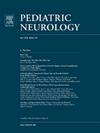Genetic Epilepsies With Onset in Infancy and Toddlerhood: A Prospective Single-Center Study in India
IF 3.2
3区 医学
Q2 CLINICAL NEUROLOGY
引用次数: 0
Abstract
Background
The burden of genetic causes of epilepsy is higher in infants and toddlers. Early diagnosis helps in precision therapy and prenatal diagnosis. The spectrum of genetic causes can vary depending on the location and prevalence of consanguinity practices.
Methods
Children having epilepsy with onset before age three years were enrolled after ruling out acquired causes. Neuroimaging, electroencephalography, and whole exome sequencing (WES) were done and seizure outcome was assessed after six months.
Results
We enrolled 147 participants (82 boys, 65 girls). Mean age at seizure onset was 5.5 ± 6.5 months. WES gave an overall yield of 61.9% (91/147) and 71.4% (40/56) in cases with epilepsy onset before three months. Seventy (76.7%) cases had developmental delay. Commonly implicated genes were SCN1A, KCNQ2, ALDH7A1, STXBP1, TBC1D24, CDKL5, CPLX1, BRAT1, WWOX, and RHOBTB2. The common comorbidities of autism, attention-deficit/hyperactivity disorder, and intellectual disability had a significant association with genetic epilepsy. WES helped in precision medicine in over 40% of cases. While normal development was associated with higher rates of seizure freedom, those with severe microcephaly, a seizure burden of >200/month, or rigidity had higher mortality rates.
Conclusions
Genetic etiology for epilepsy is common in children with seizure onset below age three years, with yield being the highest for onset in the first three months. Presence of comorbidities increased the yield of genetic diagnosis. Autosomal recessive disorders are more common in India due to higher consanguinity rates. Higher seizure burden, severe microcephaly, or infantile epileptic spasm syndrome are associated with higher mortality.
婴幼儿期发病的遗传性癫痫:印度一项前瞻性单中心研究
背景:婴幼儿癫痫的遗传原因负担较高。早期诊断有助于精准治疗和产前诊断。遗传原因的范围可以根据血缘关系的位置和流行程度而有所不同。方法排除获得性病因后,纳入3岁前发病的癫痫患儿。进行神经影像学、脑电图和全外显子组测序(WES),并在6个月后评估癫痫发作结果。结果共纳入147例受试者,其中男生82例,女生65例。癫痫发作平均年龄5.5±6.5个月。3个月前癫痫发作的总有效率分别为61.9%(91/147)和71.4%(40/56)。70例(76.7%)存在发育迟缓。常见的相关基因有SCN1A、KCNQ2、ALDH7A1、STXBP1、TBC1D24、CDKL5、CPLX1、BRAT1、WWOX和RHOBTB2。自闭症、注意力缺陷/多动障碍和智力残疾等常见合并症与遗传性癫痫有显著关联。WES在超过40%的病例中帮助了精准医疗。虽然正常发育与较高的癫痫发作自由率相关,但患有严重小头畸形、癫痫发作负担为200英镑/月或僵硬的患者死亡率较高。结论遗传病因在3岁以下儿童癫痫发作中较为常见,发病前3个月发生率最高。合并症的存在增加了基因诊断的成功率。常染色体隐性遗传病在印度更为常见,因为印度有较高的血缘关系。较高的癫痫发作负担、严重的小头畸形或婴儿癫痫痉挛综合征与较高的死亡率相关。
本文章由计算机程序翻译,如有差异,请以英文原文为准。
求助全文
约1分钟内获得全文
求助全文
来源期刊

Pediatric neurology
医学-临床神经学
CiteScore
4.80
自引率
2.60%
发文量
176
审稿时长
78 days
期刊介绍:
Pediatric Neurology publishes timely peer-reviewed clinical and research articles covering all aspects of the developing nervous system.
Pediatric Neurology features up-to-the-minute publication of the latest advances in the diagnosis, management, and treatment of pediatric neurologic disorders. The journal''s editor, E. Steve Roach, in conjunction with the team of Associate Editors, heads an internationally recognized editorial board, ensuring the most authoritative and extensive coverage of the field. Among the topics covered are: epilepsy, mitochondrial diseases, congenital malformations, chromosomopathies, peripheral neuropathies, perinatal and childhood stroke, cerebral palsy, as well as other diseases affecting the developing nervous system.
 求助内容:
求助内容: 应助结果提醒方式:
应助结果提醒方式:


